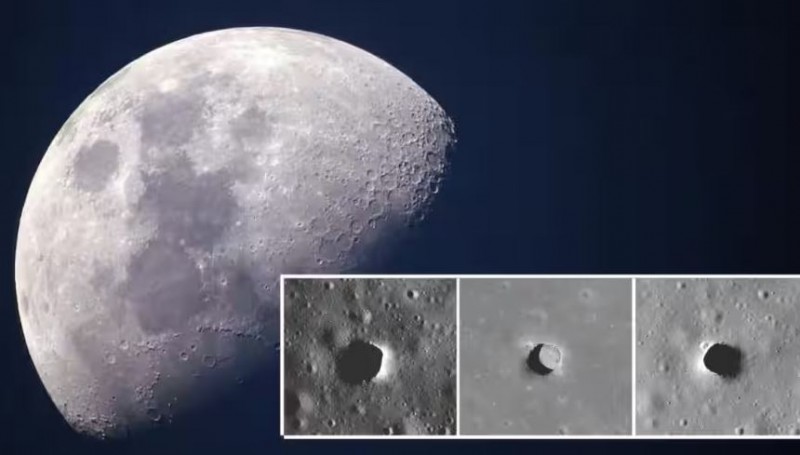
New Delhi: ISRO has made history with Chandrayaan-3's soft landing on the Moon, marking a monumental moment for India. The nation has become the first to achieve a seamless spacecraft landing on the Moon's southern surface. The culmination of prayers from 1.4 billion people and four years of hard work and dedication by 16,500 ISRO scientists has finally paid off, placing not only the entire world but also the Moon within India's reach. Over the past few days, interest in the Moon has surged following the Chandrayaan-3 launch. Many questions about the Moon have arisen on the internet. Here, we present 10 Moon-related facts.
The Moon isn't perfectly round:
On a full moon day, the Moon may appear completely round, but in reality, it isn't spherical like a ball. Instead, it's slightly oval. Consequently, when you observe the Moon, you're only seeing a portion of its surface. Moreover, its mass isn't centered geometrically; it deviates by 1.2 miles from its geometric center.
The Moon is never fully visible:
Even at its fullest, you can only see up to 59 percent of the Moon. The remaining 41 percent remains hidden from Earth's view. If you were to stand in the 41 percent unobservable area in space, Earth would not be visible.
Volcanic eruption's connection to the 'Blue Moon':
The term 'blue moon' is believed to have originated in 1883 due to a volcanic eruption on Indonesia's Krakatoa island. This eruption is among Earth's most severe volcanic events. Reports indicate that the explosion's sound was audible as far as Perth, Mauritius, a city in Western Australia. The ash propelled into the atmosphere by the eruption caused the moon to appear blue during ash-filled nights, marking the term's inception.
Covert project involving the Moon:
At one point, the US contemplated using nuclear weapons on the Moon. The intention was to showcase American military might to the Soviet Union, applying pressure on the latter. This classified project was named 'A Study of Lunar Research Flights,' also referred to as project 'A119.'
Formation of lunar impact craters:
An ancient Chinese belief attributed solar eclipses to a dragon swallowing the sun. In response, the Chinese made noise to drive the dragon away. They also held that a frog resided in the Moon's pits. However, the Moon's impact craters were formed billions of years ago by celestial body collisions, not by frogs.
Moon's impact on Earth's rotation:
During its closest point to Earth, known as perigee, the Moon induces significantly higher tides than usual. This interaction also slows down Earth's rotation by 1.5 milliseconds per century.
Moonlight and lunar eclipse:
The Sun is 14 times brighter than a full moon. To match the Sun's brightness with a full moon, you'd need 398,110 moons. During a lunar eclipse, when the Moon enters Earth's shadow, its surface temperature plummets to 500 degrees Fahrenheit, a process taking less than 90 minutes.
Leonardo da Vinci's observation:
At times, the Moon appears as a crescent. This phase is known as 'Ardhachandra' or 'Balchandra.' In such instances, part of the Moon is brightly lit, while the rest is barely visible, contingent on weather conditions. Leonardo da Vinci was the first to document that the Moon doesn't expand or contract; only a section disappears from our view.
Lunar crater naming:
The International Astronomical Union assigns names not just to the Moon's craters but to various astronomical objects. Craters are named after notable scientists, artists, and explorers. Craters near the Apollo Crater and Meyer Moskovins (Sea of Moscow) are named after American and Russian astronauts. Meyer Moskovins designates a lunar region, often called the Moon's "oceanic region." There's much about the Moon that remains unknown; a 1988 Lowell Observatory survey in Flagstaff, Arizona found that 13 percent of respondents believed the Moon was made of cheese.
Enigma of the Moon's South Pole:
The Moon's south polar region, the target for Chandrayaan-3, remains mysterious. NASA reveals that this area is home to numerous deep pits and mountains that haven't seen sunlight in billions of years due to shadowed terrain.
How Nasa Help India’s Moon Mission Chandrayaan
Fascinating Facts About Chandrayaan 3, Lunar Mission
Know All About India's Rocket Woman Ritu Karidhal Srivastava